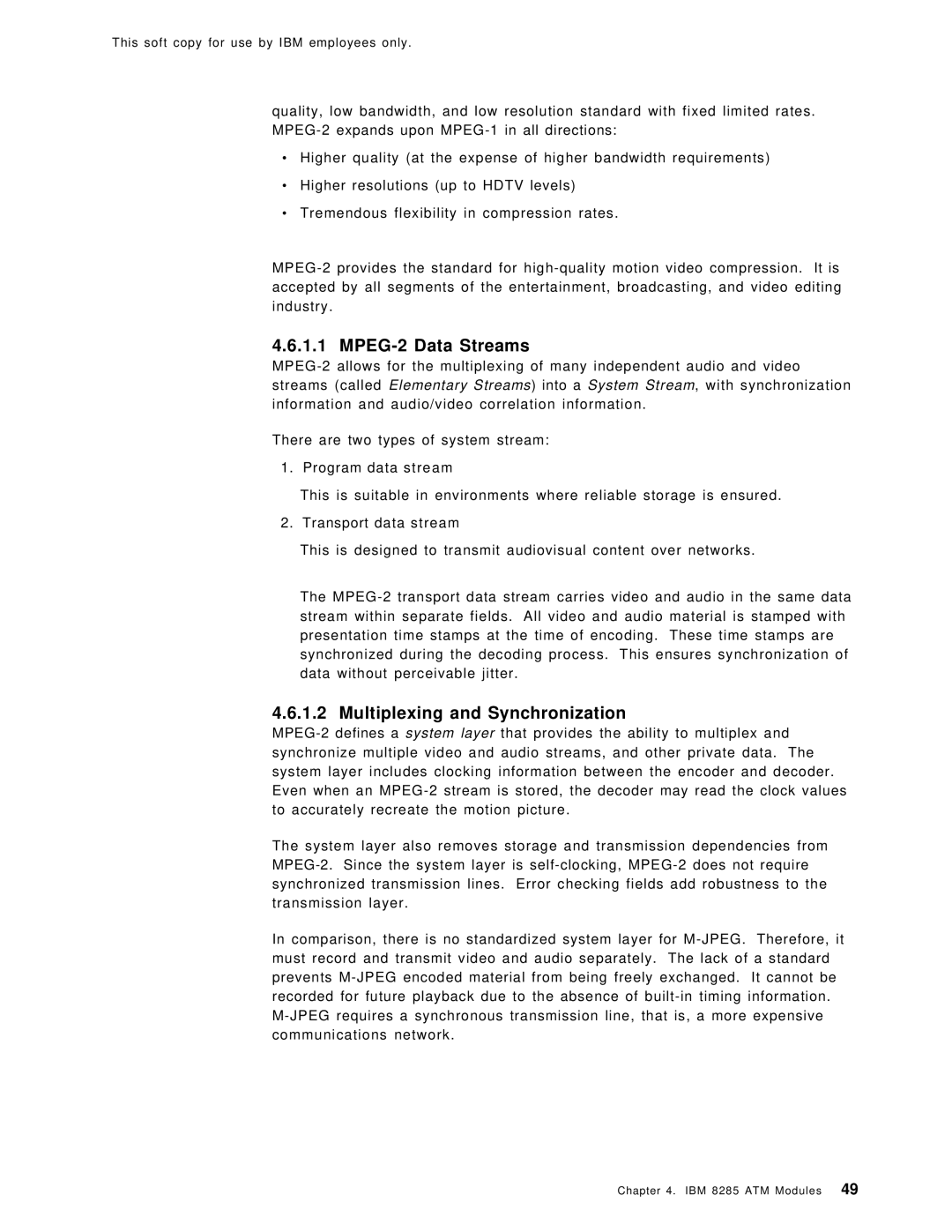This soft copy for use by IBM employees only.
quality, low bandwidth, and low resolution standard with fixed limited rates.
•
•
•
Higher quality (at the expense of higher bandwidth requirements)
Higher resolutions (up to HDTV levels)
Tremendous flexibility in compression rates.
4.6.1.1 MPEG-2 Data Streams
There are two types of system stream:
1. Program data stream
This is suitable in environments where reliable storage is ensured.
2. Transport data stream
This is designed to transmit audiovisual content over networks.
The
4.6.1.2 Multiplexing and Synchronization
The system layer also removes storage and transmission dependencies from
In comparison, there is no standardized system layer for
